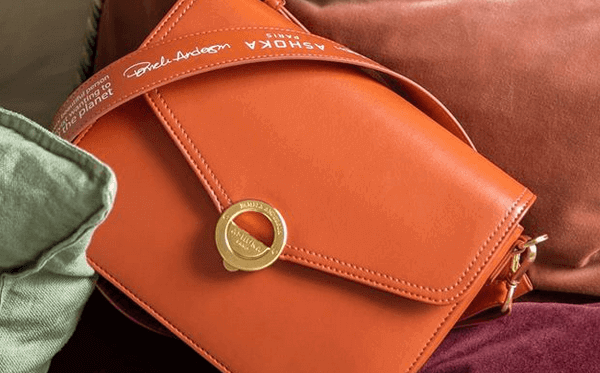
Leather production is burning and poisoning our planet, propelling it towards a climate disaster scenario. Transforming cow hides into clothing and accessories produces enormous quantities of manure and slaughterhouse waste, consumes enormous amounts of water and pollutes water, air and soil. The leather industry kills more than a billion animals each year and shares responsibility for environmental risks with the meat industry. If you are making united decisions to fight global warming, you should not wear leather.
The climate catastrophe
The most significant environmental destruction occurs before the animal hides even arrive at the tannery. As a result, the greenwashing of brands that pride themselves on their “vegetable tanned” or “chrome tanning” leather ignores the process that causes the most damage: breeding.
Animal agriculture (including the leather industry) is a leading driver of global warming and is responsible for almost a fifth of the world's greenhouse gas emissions. According to the 2016 Environmental Profit and Loss (EP&L) report from Kering, a luxury fashion conglomerate, more than 93% of leather's environmental impact is caused by land use and gas emissions. greenhouse effect linked to livestock farming.
Land use, deforestation, waste and water pollution
Factory farming for food and leather requires large amounts of water and thousands of hectares of pasture that must be deforested. Around 80% of the Amazon rainforest has been razed to make way for pastures and crops to feed animals. Deforestation is destroying the habitats of millions of species, destroying the Earth's canopy and fueling climate change.
Animals on intensive farms produce 130 times more excrement than humans do, and mostly without the benefit of a waste treatment facility. Livestock farming is the main cause of water pollution and ammonia emissions in France. It impacts ecosystems and transforms rivers into “mud”.
Tannery chemicals and toxins
Leather is the skin of a dead animal. This means it must be treated with a series of chemicals to prevent it from breaking down in the buyer's cupboard.
Mineral salts, formaldehyde, tar derivatives, cyanide dyes and other hazardous substances are regularly used during the tanning process. More than 90% of the world's leather is chrome-tanned, and all chrome-containing waste is dangerous. Wastewater containing these dangerous chemicals is often discharged into rivers, their banks, or nearby fields. Pure Earth, a nonprofit that works to reduce pollution in developing countries, included tanneries in its list of the world's 10 most toxic industries in 2012.
Tannery employees and nearby residents often have higher rates of cancer, as well as skin and respiratory diseases. Leather production is so unsafe that the process is being abandoned in most European countries, the United Kingdom and the United States. Farms are being moved overseas and threatening the health of people in other parts of the world so that Westerners can continue to wear leather gloves and shoes.
PETA Germany investigated the growing leather trade in Dhaka, Bangladesh . The group visited the deprived residential area of Hazaribagh, where 15,000 workers (some as young as 10 years old) work in more than 200 tanneries. Standing barefoot in toxic chrome effluent, they handle acid and bleach. Even when provided with cheap plastic boots, workers often do not have masks or goggles to protect against the fumes that cause serious respiratory problems. Some people lose fingers because of conveyors. In this factory, 90% of tannery employees die before the age of 50.
Leather leaves a trail of destruction in its wake and will continue to destroy the planet long after the items have been purchased and then discarded. Chromium penetrates animal skin, making leather virtually non-biodegradable and impossible to recycle. The tanning industry itself has conducted independent studies and found that leather (regardless of the tanning process) does not decompose effectively.
Killing the planet and animals
Since cowhide is the most profitable by-product of the meat industry, purchasing leather directly funds factory farming, slaughterhouses and all the cruelty they entail. Animals on dirty, crowded farms are often locked in cages and deprived of things that are natural and important to them like foraging for food and raising their young. Many are victims of horrific mutilations: their teeth, tails and testicles are sometimes cut off without painkillers. Cows are artificially impregnated, again and again, and their terrified calves are taken from them shortly after birth. At the slaughterhouse, many cows are still conscious and feel pain when their throats are slaughtered. Luxury brands often sell “calfskin,” meaning that terrified babies torn from their mothers are also killed in this way.
And the cows aren't the only ones suffering: during a PETA Asia investigation, a slaughterhouse worker confirmed that the structure in question killed up to 200 dogs every day. When the investigation images were filmed, around 300 dogs intended for slaughter were in the structure. The PETA Asia investigator reported on dog skins being made into street or work gloves, shoes, belts, jacket collars and other products exported around the world. No company would advertise that their gloves and belts are made of dog skin. The owner of a processing factory told the PETA Asia investigator that the structure sells its products as lambskin. When you're shopping for leather, there's no easy way to determine what you're wearing – or rather who you're wearing.
You can help us reduce the disastrous impact of leather
How can we help reduce the disastrous impact of leather on the environment, human health and animals? The answer is simple: never buy or wear animal leather. Vegan leather is widely available, and making this compassionate choice allows you to show major retailers that cruelty is not in fashion.
Sources: PETA
Posted on 2024-01-23 12:30










Comments